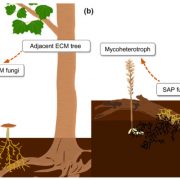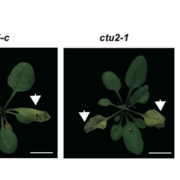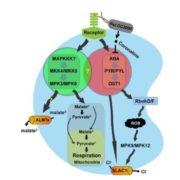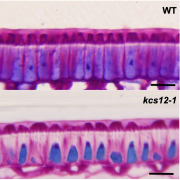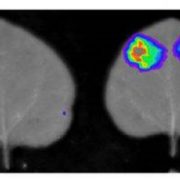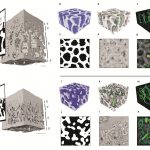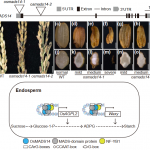Shielding the oil reserves: the scutellum as a source of chemical defenses (Plant Physiol.)
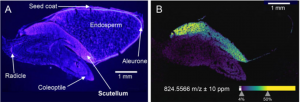 If you work with grasses, you are probably familiar with the scutellum –the shield-like cotyledon typical of seeds from these plants. This structure has a renowned role in transferring nutrients to the growing embryo. However, Murphy and colleagues show us that not only does this structure look like a shield, but it also protects the seedling from pathogens by producing and storing a myriad of defense compounds. Some examples of these substances include zealexins, benzoxazinoids and phenolamide derivates, which might be produced constitutively or in response to pathogen attacks. Notably, several of them are unique to the scutellum and even species-specific. Parallel metabolite and RNA-Seq analyses in maize seedlings show that these defense compounds are produced in the scutellum after germination. Therefore, these exciting findings pave the way for a fascinating new dimension of seedling biotic interactions. (Summary by Carlos A. Ordóñez-Parra @caordonezparra) Plant Physiol. 10.1093/plphys/kiac038
If you work with grasses, you are probably familiar with the scutellum –the shield-like cotyledon typical of seeds from these plants. This structure has a renowned role in transferring nutrients to the growing embryo. However, Murphy and colleagues show us that not only does this structure look like a shield, but it also protects the seedling from pathogens by producing and storing a myriad of defense compounds. Some examples of these substances include zealexins, benzoxazinoids and phenolamide derivates, which might be produced constitutively or in response to pathogen attacks. Notably, several of them are unique to the scutellum and even species-specific. Parallel metabolite and RNA-Seq analyses in maize seedlings show that these defense compounds are produced in the scutellum after germination. Therefore, these exciting findings pave the way for a fascinating new dimension of seedling biotic interactions. (Summary by Carlos A. Ordóñez-Parra @caordonezparra) Plant Physiol. 10.1093/plphys/kiac038


